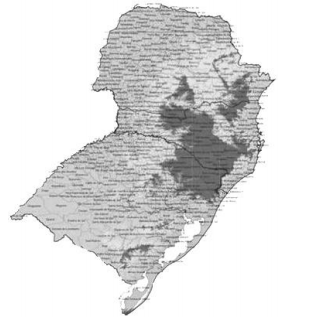Questões de Concurso
Para prefeitura de salto do jacuí - rs
Foram encontradas 728 questões
Resolva questões gratuitamente!
Junte-se a mais de 4 milhões de concurseiros!
Analise as seguintes assertivas a respeito de determinadas palavras no texto.
I. Na linha 12, a expressão ‘até mesmo’ introduz no fragmento ideia de inclusão.
II. A palavra ‘apenas’ na linha 26 incorpora à frase ideia de retificação em relação ao que foi dito.
III. Na linha 26, a expressão ‘também’ acrescenta ao enunciado ideia de inclusão.
Quais estão corretas?
Instructions: answer the question based on the following text.

Source: https://www.independent.co.uk/life-style/ikigai-hygge-lagom-swedish-danish-japaneses-candinavian-lifestyle-happiness-meaning-of-life-a7956141.html
Instructions: answer the question based on the following text.

Source: https://www.independent.co.uk/life-style/ikigai-hygge-lagom-swedish-danish-japaneses-candinavian-lifestyle-happiness-meaning-of-life-a7956141.html
I. It means 'not full of meaning'. II. It is an adverb. III. It is formed by adding two prefixes.
Which ones are INCORRECT?
Instructions: answer the question based on the following text.

Source: https://www.independent.co.uk/life-style/ikigai-hygge-lagom-swedish-danish-japaneses-candinavian-lifestyle-happiness-meaning-of-life-a7956141.html
I. It is an example of the zero conditional. II. It is used to talk about imaginary situations in the past. III. The third conditional would be "If you had increased the daily time at flow you would increase your connection with your ikigai".
Which ones are INCORRECT?
Instructions: answer the question based on the following text.

Source: https://www.independent.co.uk/life-style/ikigai-hygge-lagom-swedish-danish-japaneses-candinavian-lifestyle-happiness-meaning-of-life-a7956141.html
Instructions: answer the question based on the following text.

Source: https://www.independent.co.uk/life-style/ikigai-hygge-lagom-swedish-danish-japaneses-candinavian-lifestyle-happiness-meaning-of-life-a7956141.html
"Still, it's hard not to feel that ikigai – like hygge and lagom – Is another sticking plaster we've reached for to help patch over the problems in our lives that run deeper than any buzzword word can solve.”
I. The word 'plaster' is used literally. II. 'patch over' could be replaced by 'mend'. III. 'buzzword' could be translated as 'palavra-chave'.
Which ones are correct?
Instructions: answer the question based on the following text.

Source: https://www.independent.co.uk/life-style/ikigai-hygge-lagom-swedish-danish-japaneses-candinavian-lifestyle-happiness-meaning-of-life-a7956141.html
Instructions: answer the question based on the following text.

Source: https://www.independent.co.uk/life-style/ikigai-hygge-lagom-swedish-danish-japaneses-candinavian-lifestyle-happiness-meaning-of-life-a7956141.html
I. Hygge is the idea of finding happiness in the silence. II. Lagom is about living a moderate life. III. Ikigai is the notion that we will only find happiness if we slow down.
Which ones are INCORRECT?
Instructions: answer the question based on the following text.

Source: https://www.independent.co.uk/life-style/ikigai-hygge-lagom-swedish-danish-japaneses-candinavian-lifestyle-happiness-meaning-of-life-a7956141.html
I. It could be translated as "Tudo isso é fofinho". II. 'fluffy' in this context means 'not serious'. III. 'rather' means that you prefer to do something.
Which ones are correct?
Instructions: answer the question based on the following text.

Source: https://www.independent.co.uk/life-style/ikigai-hygge-lagom-swedish-danish-japaneses-candinavian-lifestyle-happiness-meaning-of-life-a7956141.html
"We’ve snuggled up in a comfortable knitted sweaters and filled our rooms with wood-scented candles in the pursuit of hygge".
I. 'We've snuggled up' could be translated as 'Nós nos aconchegamos'. II. 'Comfortable knitted sweaters' does not follow the correct adjective word order. III. The expression 'wood-scented candles' in formed by three nouns.
Which ones are correct?
Instructions: answer the question based on the following text.

Source: https://www.independent.co.uk/life-style/ikigai-hygge-lagom-swedish-danish-japaneses-candinavian-lifestyle-happiness-meaning-of-life-a7956141.html
Coluna 1
1. Indústria de bens não duráveis. 2. Indústria de bens duráveis. 3. Indústria pesada. 4. Indústria de construção.
Coluna 2
( ) São as que produzem bens consumidos a médio e longo prazo. Como exemplo, aparecem as indústrias automobilísticas, de móveis, de eletrodomésticos, elétricas, etc.
( ) São aquelas que consomem grande quantidade de energia e de matérias-primas e produzem itens acabados ou semiacabados.
( ) São as que produzem bens consumidos em curto prazo, como produtos alimentícios, cigarros, bebidas, medicamentos, calçados, confecções, etc. Essas indústrias estão distribuídas geograficamente, pois os mercados consumidores são variados e dispersos.
( ) Surgiu devido à intensa urbanização da sociedade. Até o século XIX, a construção era considerada um processo artesanal, mas depois se transformou em uma atividade industrial movida pelas demandas do mundo moderno.
A ordem correta de preenchimento dos parênteses, de cima para baixo, é:
Assinale a alternativa que preenche corretamente a lacuna do trecho acima.
Em relação ao sistema Terra-Sol, analise as afirmações abaixo e assinale V, se verdadeiras, ou F, se falsas.
( ) A órbita da Terra em torno do Sol é atualmente circular, uma trajetória fechada em forma de círculo.
( ) A distância média da Terra-Sol é aproximadamente 150 milhões de quilômetros, o que significa que a luz leva em média 8 minutos e 20 segundos para chegar ao nosso planeta.
( ) A superfície curvada da Terra apresenta um ângulo continuamente variável aos raios paralelos incidentes da insolação. As diferenças no ângulo dos raios solares em cada latitude resultam em uma distribuição desigual da insolação e do aquecimento.
( ) O ponto subsolar é o ponto que recebe os raios solares em ângulo oblíquo.
A ordem correta de preenchimento dos parênteses, de cima para baixo, é:
Observe a imagem a seguir:

No nordeste do estado do RS, no centro do estado de SC e no sul-sudeste do estado do PR, como
está representado na imagem acima, há uma produção de silvicultura muito presente na região. O
foco da silvicultura nessas áreas é:

